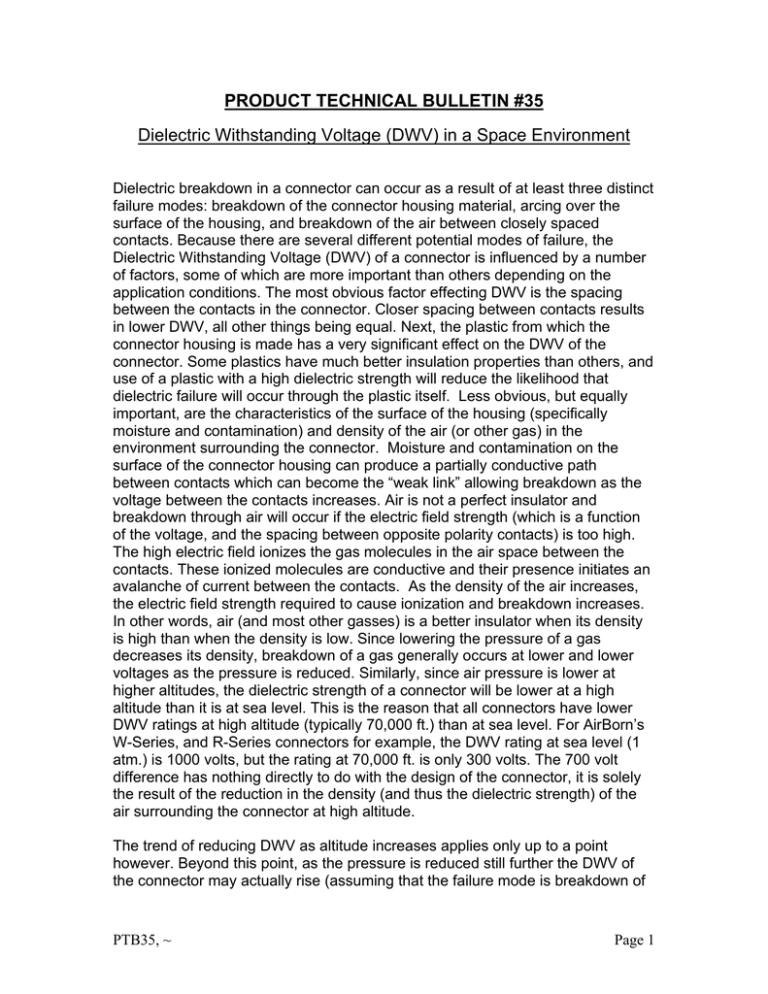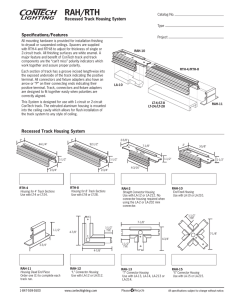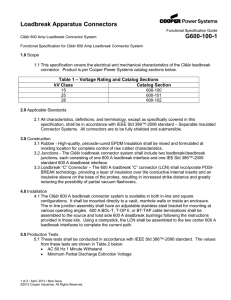Dielectric Withstanding Voltage in a Space Environment
advertisement

PRODUCT TECHNICAL BULLETIN #35 Dielectric Withstanding Voltage (DWV) in a Space Environment Dielectric breakdown in a connector can occur as a result of at least three distinct failure modes: breakdown of the connector housing material, arcing over the surface of the housing, and breakdown of the air between closely spaced contacts. Because there are several different potential modes of failure, the Dielectric Withstanding Voltage (DWV) of a connector is influenced by a number of factors, some of which are more important than others depending on the application conditions. The most obvious factor effecting DWV is the spacing between the contacts in the connector. Closer spacing between contacts results in lower DWV, all other things being equal. Next, the plastic from which the connector housing is made has a very significant effect on the DWV of the connector. Some plastics have much better insulation properties than others, and use of a plastic with a high dielectric strength will reduce the likelihood that dielectric failure will occur through the plastic itself. Less obvious, but equally important, are the characteristics of the surface of the housing (specifically moisture and contamination) and density of the air (or other gas) in the environment surrounding the connector. Moisture and contamination on the surface of the connector housing can produce a partially conductive path between contacts which can become the “weak link” allowing breakdown as the voltage between the contacts increases. Air is not a perfect insulator and breakdown through air will occur if the electric field strength (which is a function of the voltage, and the spacing between opposite polarity contacts) is too high. The high electric field ionizes the gas molecules in the air space between the contacts. These ionized molecules are conductive and their presence initiates an avalanche of current between the contacts. As the density of the air increases, the electric field strength required to cause ionization and breakdown increases. In other words, air (and most other gasses) is a better insulator when its density is high than when the density is low. Since lowering the pressure of a gas decreases its density, breakdown of a gas generally occurs at lower and lower voltages as the pressure is reduced. Similarly, since air pressure is lower at higher altitudes, the dielectric strength of a connector will be lower at a high altitude than it is at sea level. This is the reason that all connectors have lower DWV ratings at high altitude (typically 70,000 ft.) than at sea level. For AirBorn’s W-Series, and R-Series connectors for example, the DWV rating at sea level (1 atm.) is 1000 volts, but the rating at 70,000 ft. is only 300 volts. The 700 volt difference has nothing directly to do with the design of the connector, it is solely the result of the reduction in the density (and thus the dielectric strength) of the air surrounding the connector at high altitude. The trend of reducing DWV as altitude increases applies only up to a point however. Beyond this point, as the pressure is reduced still further the DWV of the connector may actually rise (assuming that the failure mode is breakdown of PTB35, ~ Page 1 the air, and not housing insulation or “over surface” breakdown). The reason for this that at very low pressure (in the vacuum of space well above the earth’s atmosphere) the density of the air is so low that there are very few air molecules present in the gap between the connector contacts. Under these conditions, breakdown can no longer occur as a result of ionizing the gas molecules since there are simply not enough gas molecules present to support the "avalanche" of ionization and current that constitutes breakdown. So, at some point, dependent on the gas pressure and the spacing between the pins, further reduction of the pressure will actually result in an increase in the DWV of the connector. Thus, the voltage at which breakdown occurs in a good vacuum is no longer a function of breakdown of the air, but of other variables such as the dielectric strength of the insulator material (which is typically very high) and the cleanliness of the surface of the insulator in between adjacent pins. In general, breakdown in a hard vacuum situation would be expected to occur as a result of "over surface" breakdown, not breakdown "through" the insulator material itself. Based on all the above, it is generally expected that the DWV of a connector in a hard vacuum environment is probably similar to what it would be at sea level, assuming that the connector is clean. However, if the connector must operate continuously (for example during launch of a space vehicle) from sea level, through the upper atmosphere, and finally in space, the DWV capability at high altitude will still be the limiting factor. If, on the other hand, the connector doesn't get powered until the equipment (a satellite for example) is already in space, then the high altitude DWV may not be a limitation. It is also important to understand that the DWV rating of a connector is not a “working voltage” rating, but merely an indication of the magnitude of the voltage that the connector can withstand without immediate, catastrophic failure of its insulation. PTB35, ~ Page 2



